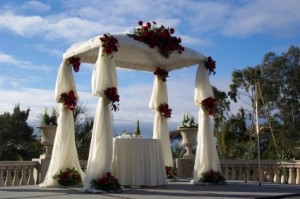
For an interfaith minister, coming across individuals from many different religious backgrounds who are seeking your services is not at all uncommon. The Universal Life Church espouses the value that all who seek goodness and spiritual union are welcome as members. For many members, however, the laws and customs of the religion in which they were raised are aspects that they will wish to include in their wedding ceremony. For this reason, it is important that an interfaith minister who is performing a wedding for a couple who wishes to include traditions from the faith or culture of their upbringing understand and respect those aspects of their lives and of their ceremony.
Judaism is one of the oldest religions in the world, and it has deeply rooted laws and traditions that may remain important to those who were raised in the Jewish culture even if they no longer practice all Jewish customs. For couples who are getting married, including customs from the Jewish upbringing of one or both individuals may be more deeply rooted in their authentic sense of family and culture than in their desire to practice Judaism exclusively. Including these customs and following these laws may also be desired in reverence to the parents or families of the couple.
The exact nature of a Jewish wedding ceremony can vary based on the sect of Judaism that traditions are being drawn from, but the basic nature of the ceremony remains mostly the same throughout Jewish traditions. In traditional practice, the ceremony is preceded by the couple signing their marriage contact, called a ketubah, which explains the obligations of a husband to his wife. This document is sacred, and if it is lost or destroyed, a couple may not keep a home together until a second ketubah is created. When the ceremony begins, the couple stands under a canopy or arch called a chuppah. This symbolic aspect of a Jewish wedding represents that a couple begins a new home together with their marriage. An important aspect of Jewish law is invoked when the groom presents his bride with a wedding band. Jewish law dictates that two valid witnesses must be present for this; in the case of Orthodox Judaism, the witnesses must be male. The presentation of a ring from bride to groom can be considered egalitarian and may violate Jewish law.
The ceremony continues on with seven blessings being recited by officiants or guests and wine shared between the bride and groom. When the ceremony is finished, it is traditional for the groom to crush a glass under his right foot as guests congratulate the couple with the traditional phrase “mazel tov”. This tradition is said to reflect on the sorrow of the Jews over the destruction of the temple in Jerusalem. Celebration then ensues, including dancing, feasting and prayer.
As a minister of the Universal Life Church, you must be willing to understand, embrace and respect Jewish traditions and laws as they are chosen to be included in a ceremony by a bride and groom. Learning about Jewish law and tradition are excellent ways to enter a situation of that nature prepared and informed, but one of the best courses of action is to respectfully talk to the bride and groom about Jewish law and their customs so that you perform a wedding that respects Judaism, the couple and their families.

